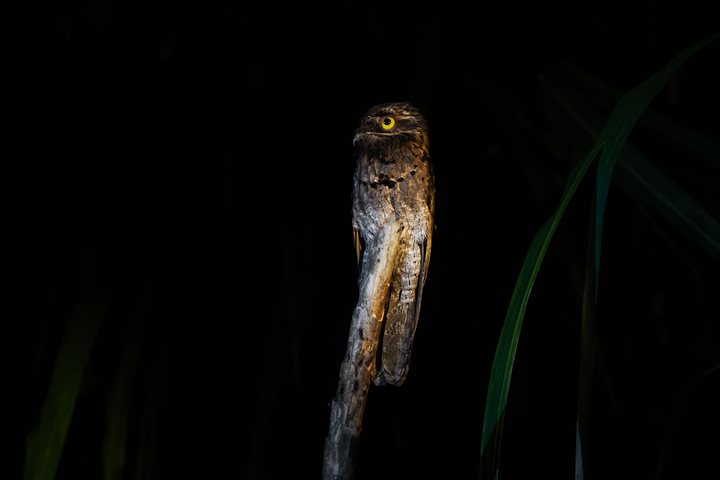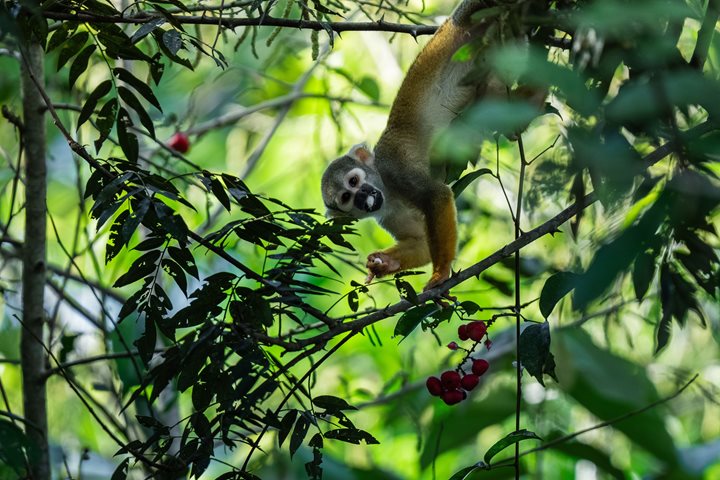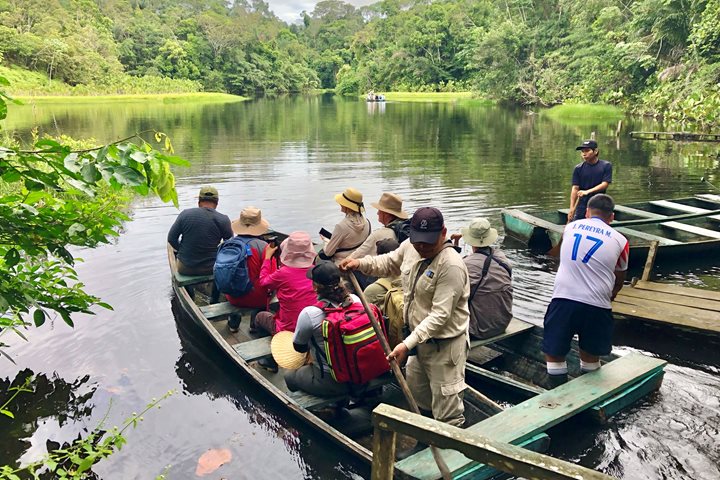Today was our first full day in the Peruvian Amazon and we awoke early to enjoy the Ucayali River at its finest. This is a vital waterway that flows through the heart of the Amazon rainforest. Stretching over 1,000 miles, it is one of the main tributaries of the Amazon River and holds immense ecological and cultural significance.
The Ucayali River is known for its rich biodiversity, with countless species of flora and fauna inhabiting its banks and waters. It provides a habitat for various wildlife, including jaguars, macaws, river dolphins, and countless fish species. The surrounding rainforest is a treasure trove of unique and often undiscovered species.
One of our first encounters of the day was with a pair of crimson-crested woodpeckers. This striking avian inhabitant of the Peruvian Amazon is known for its vibrant plumage and distinctive drumming calls. Sporting a brilliant red crown and contrasting black and white body, this woodpecker is a visual marvel amidst the lush green canopy. Its powerful bill is not only a tool for excavating insects from tree bark, but also creates a rhythmic percussion — a unique part of its courtship and territorial displays. These woodpeckers are vital contributors to the Amazon's ecosystem, playing a crucial role in controlling insect populations. The presence of the crimson-crested woodpecker is not only a testament to the Amazon's astonishing biodiversity but also a reminder of the importance of conserving this magnificent habitat for future generations to witness.
In the afternoon we went out again with our skiffs and saw a few species of kingfishers. The Amazon kingfisher is a skilled hunter, often seen perched patiently along the riverbanks. It waits for the perfect moment to dive into the water to catch fish, insects, and other aquatic prey. Its distinctive call, resembling a high-pitched, rattling laugh, is a characteristic sound of the Amazonian waterways.
By sunset we landed on a sandbank that hosted a number of shorebirds. We observed many sand-colored nighthawks, known for their cryptic plumage that blends seamlessly with the sandy riverbanks and forest floors of its habitat. During the breeding season, these skilled avian predators nest in shallow depressions on the ground, carefully camouflaged to protect their precious eggs and hatchlings. Sand-colored nighthawks are doting parents, taking turns incubating the eggs and diligently tending to their chicks. The sight of a mother sheltering her downy, camouflaged young amidst the lush Amazonian foliage is a testament to the remarkable adaptations and intricate life that thrives in this biodiverse region.







